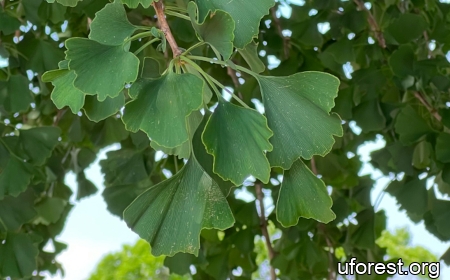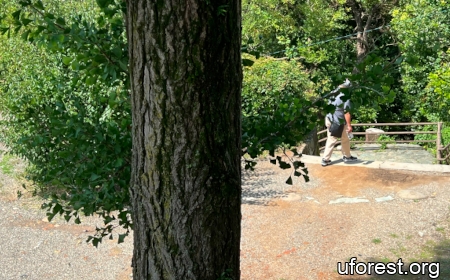Ginkgo biloba L.
| Etymology | Genus | From Japanese, gin kyo (銀杏), meaning silver apricot, a reference to the seed’s shape and color |
|---|---|---|
| Species | Two-lobed, referring to the leaf | |
| Family | Ginkgoaceae | |
| Synonyms | - | |
| Common Names | Ginkgo | |
| Status | Exotic: Cultivated Only | |
| Form | Tree | |
| Native Distribution | China | |
Diagnostics:
This is a cultivated tree sparingly planted in some gardens in Singapore. It can grow over 35m. The leaves are diagnostic, being fan-shaped.
Interesting Facts:
Ginkgo biloba is now widely cultivated over the world but current wild population is said to be only in the remote mountains of China (Tang et al., 2012). These trees were known in Japan as hibakujumoku (bombed trees) as they were among the few organisms that survived the radiation and heat from the Hiroshima atomic bomb in 1945. This consists of six Ginkgo trees situated new the epicenter of the blast (Kwant, n.d.).

Tree at Wakayama, Japan, 2024.

Fan-shaped leaves.

Bark.
References
Tang CQ, Yang Y, Ohsawa M, Yi SR, Momohara A, Su WH, Wang HC, Zhang ZY, Peng MC, Wu ZL (2012) Evidence for the persistence of wild Ginkgo biloba (Ginkgoaceae) populations in the Dalou Mountains, southwestern China. Amer.ican Journal of Botany, 99: 1408-1414.
Uemura K (1997) Cenozoic history of Ginkgo in East Asia. In T. Hori, R. W. Ridge, W. Tulecke, P. Del Tredici, J. Trémouillaux-Guiller, and H. Tobe [eds.], Ginkgo biloba—A global treasure from biology to medicine, 207–221. Springer-Verlag, Tokyo, Japan.
Kwant C (n.d) A-bombed Ginkgo trees in Hiroshima, Japan. https://kwanten.home.xs4all.nl/hiroshima.htm. Accessed on 24-Aug-2025.
Author: Siyang
Posted: 2025-08-08 / Modified: 2025-08-24